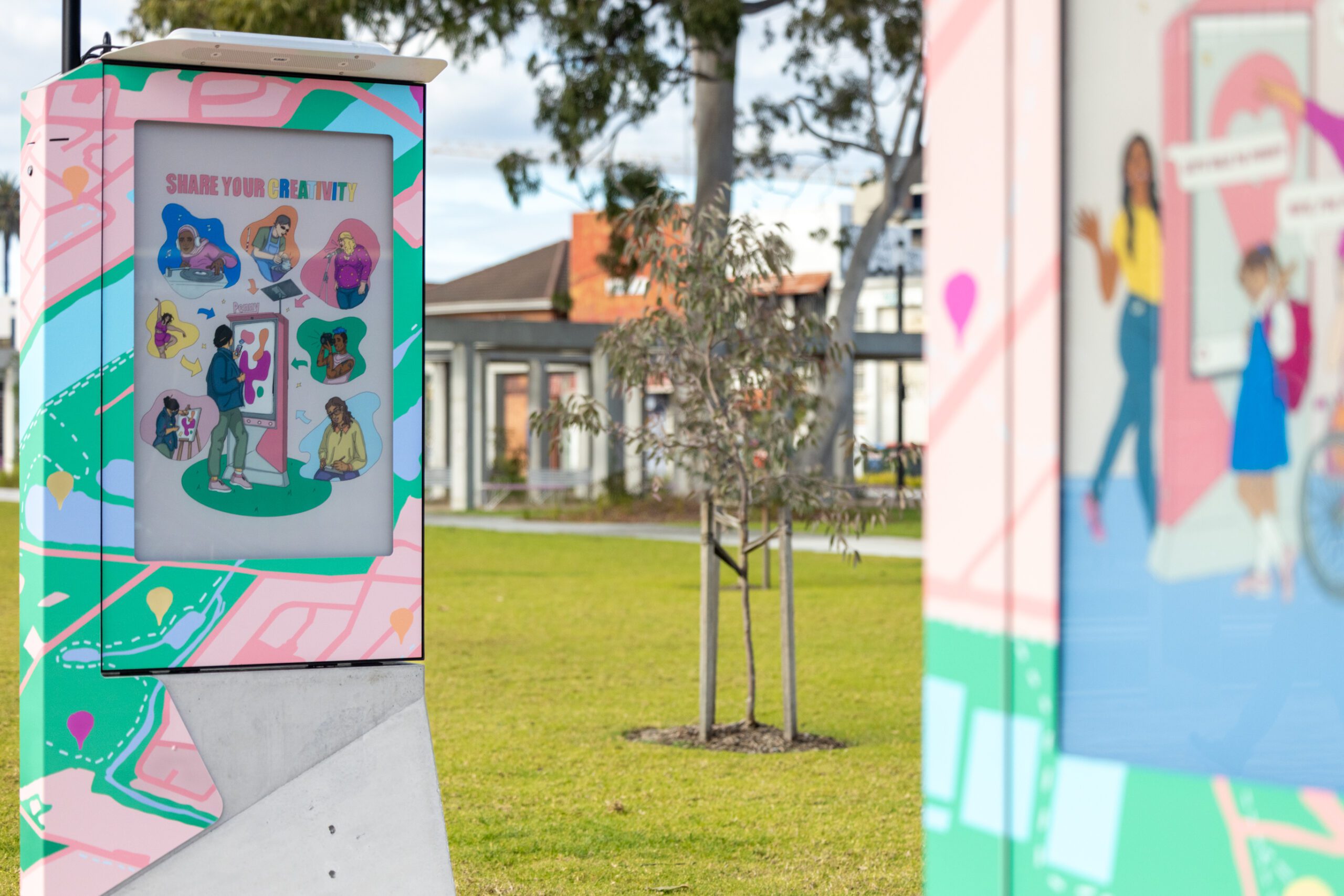Safer Spaces for Women & Girls
Penny's
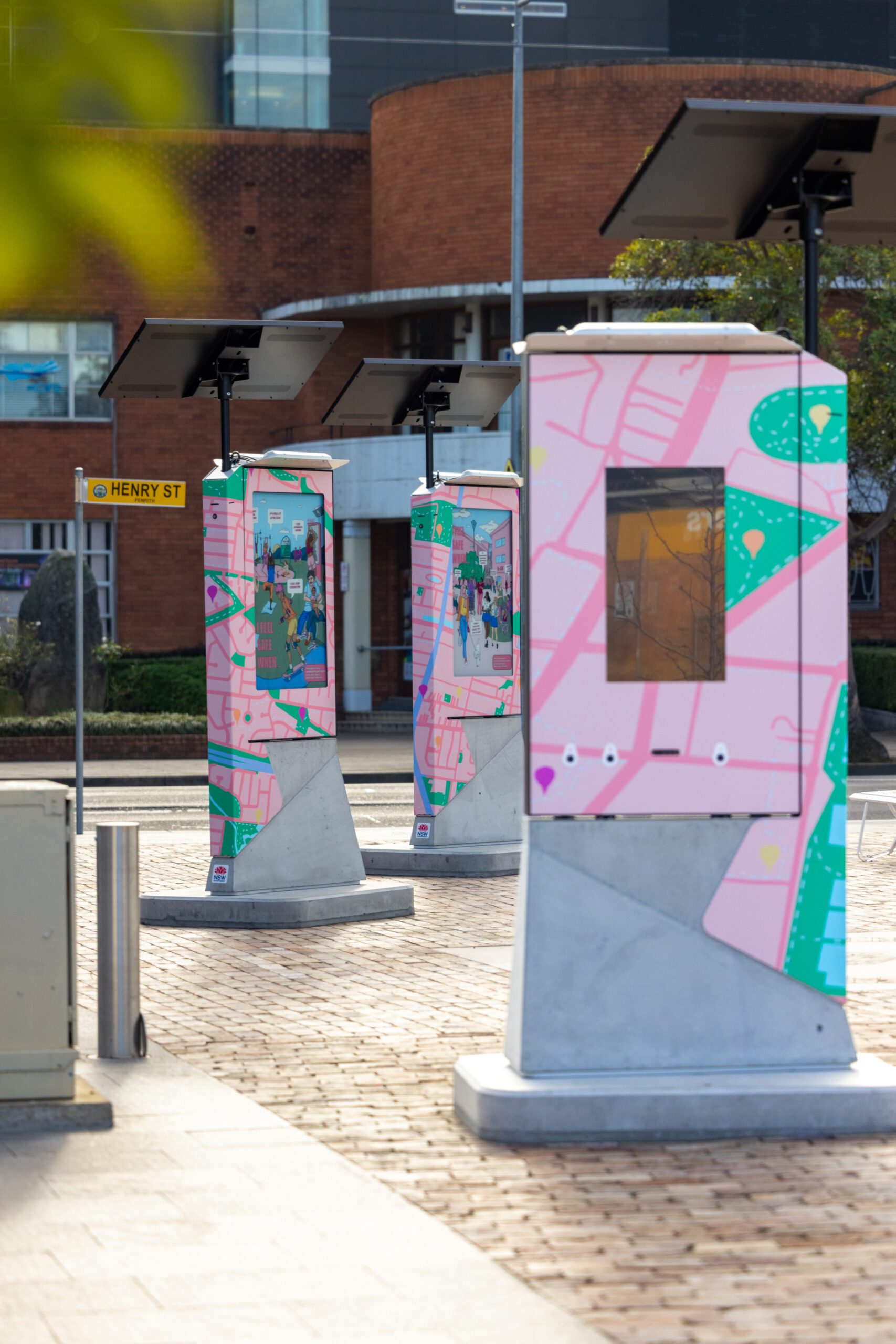
Gather valuable data and insights directly from the community to inform future urban planning and policy decisions
Engage women and girls in reshaping perceptions and realities of safety in public spaces through interactive art installations
Interactive solar-powered lightboxes showcasing artwork and collect real-time data through sensors and augmented reality
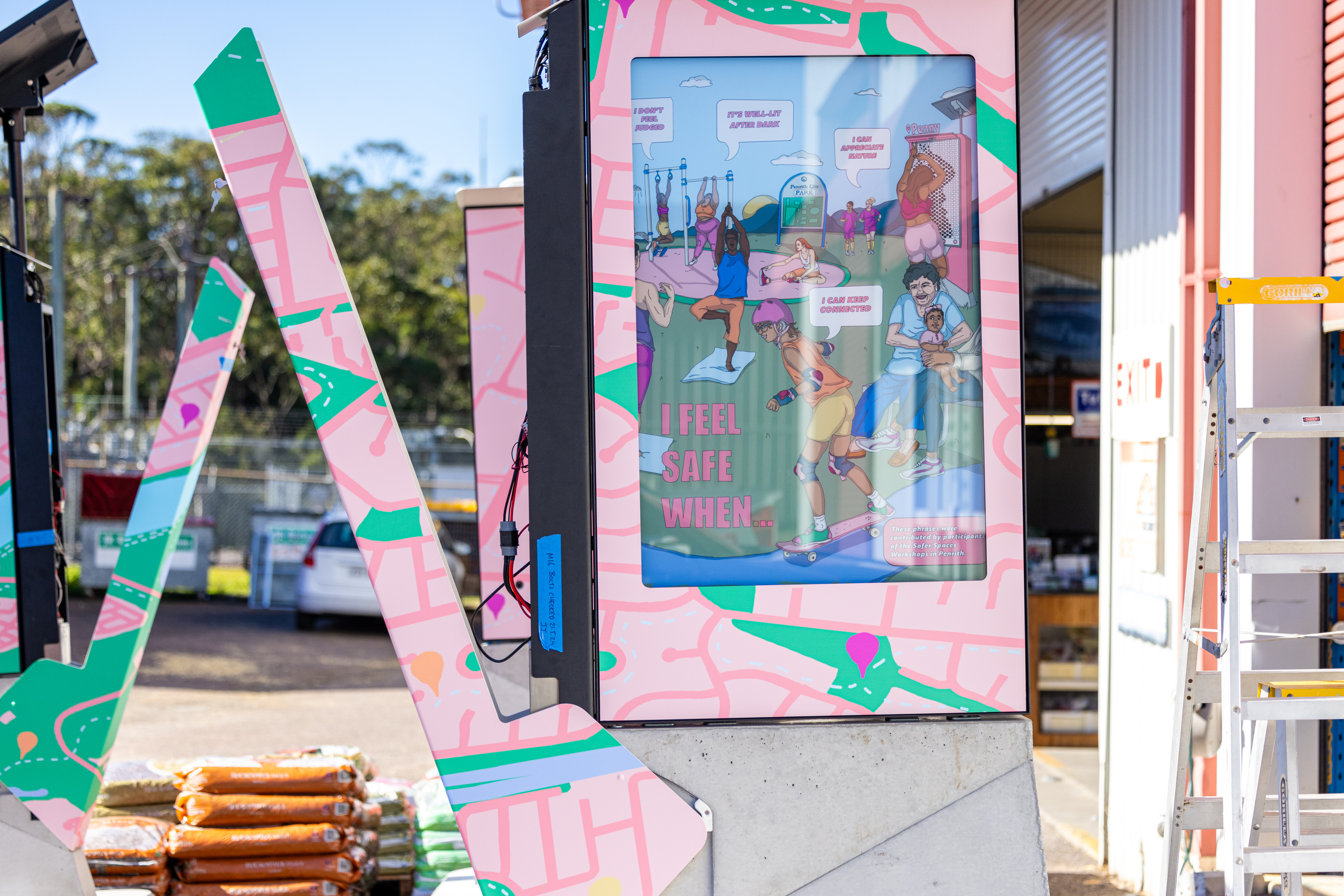
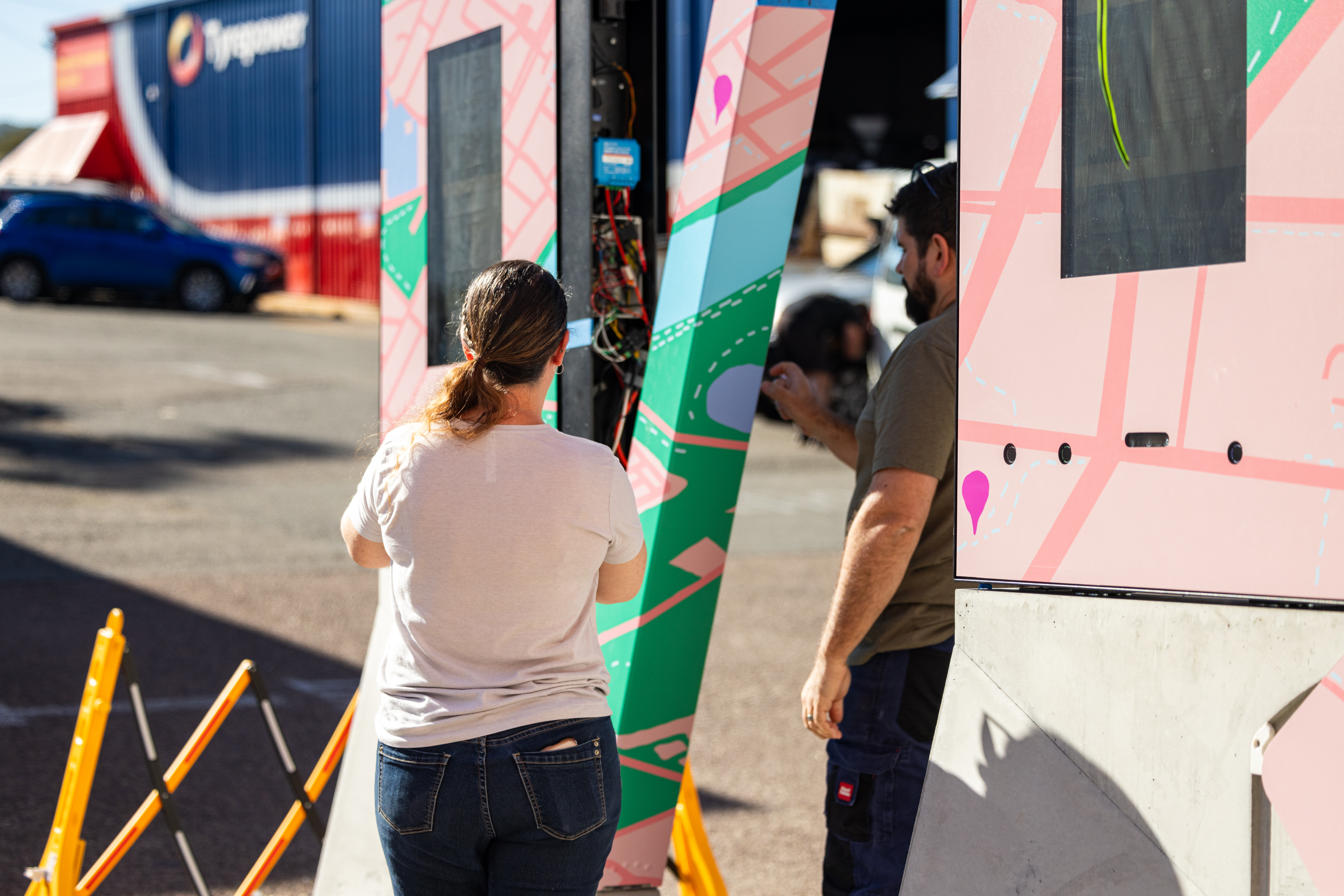
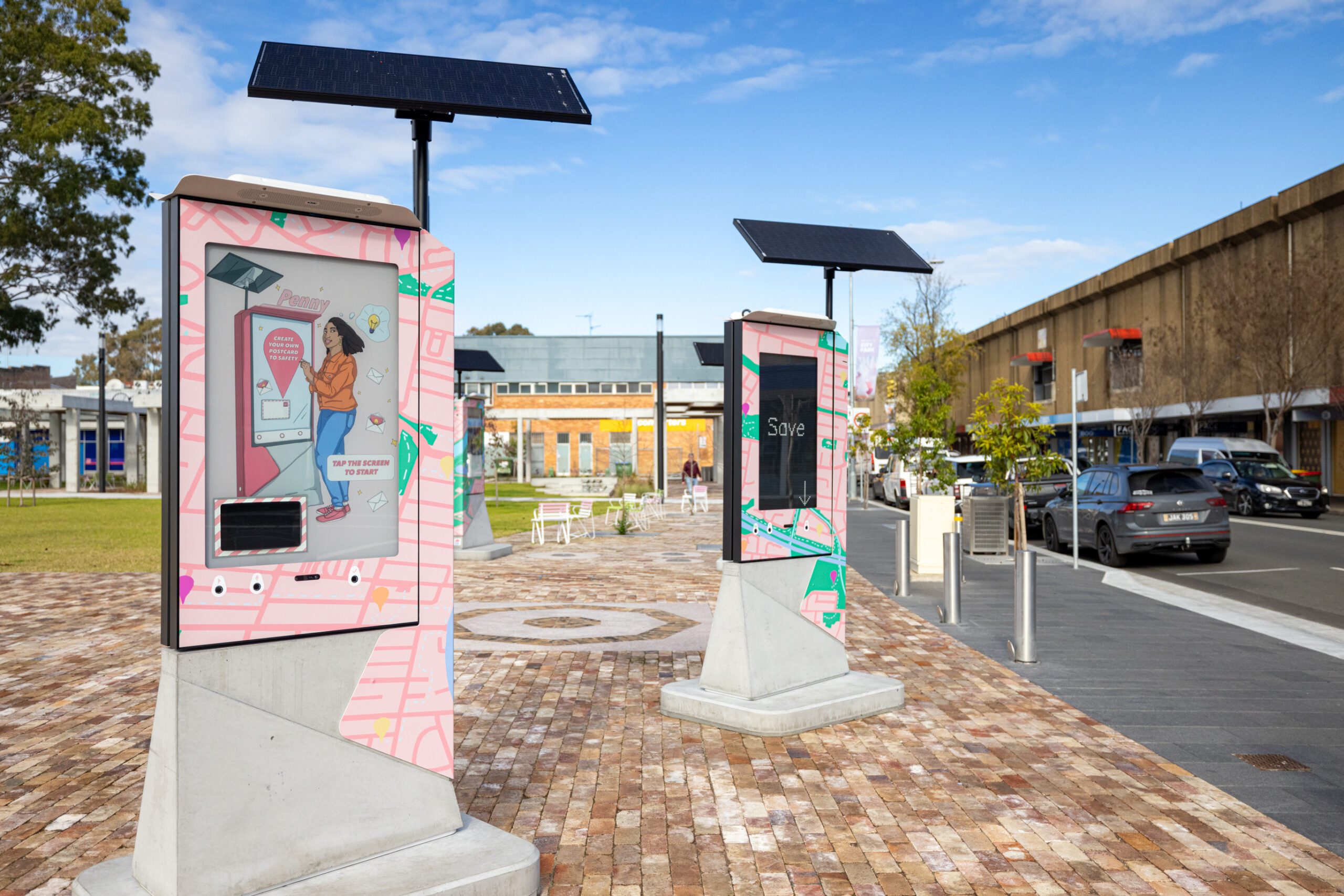
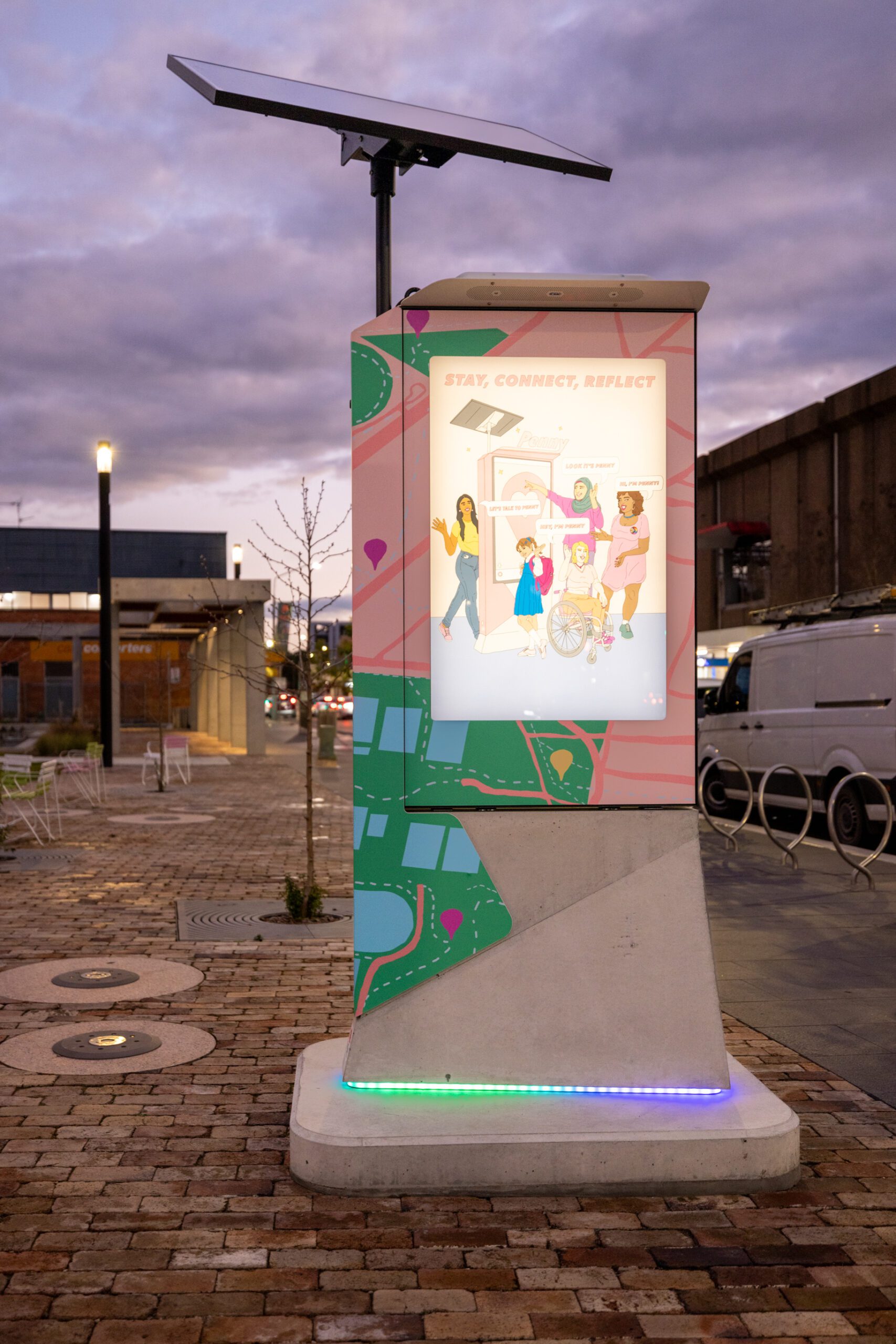
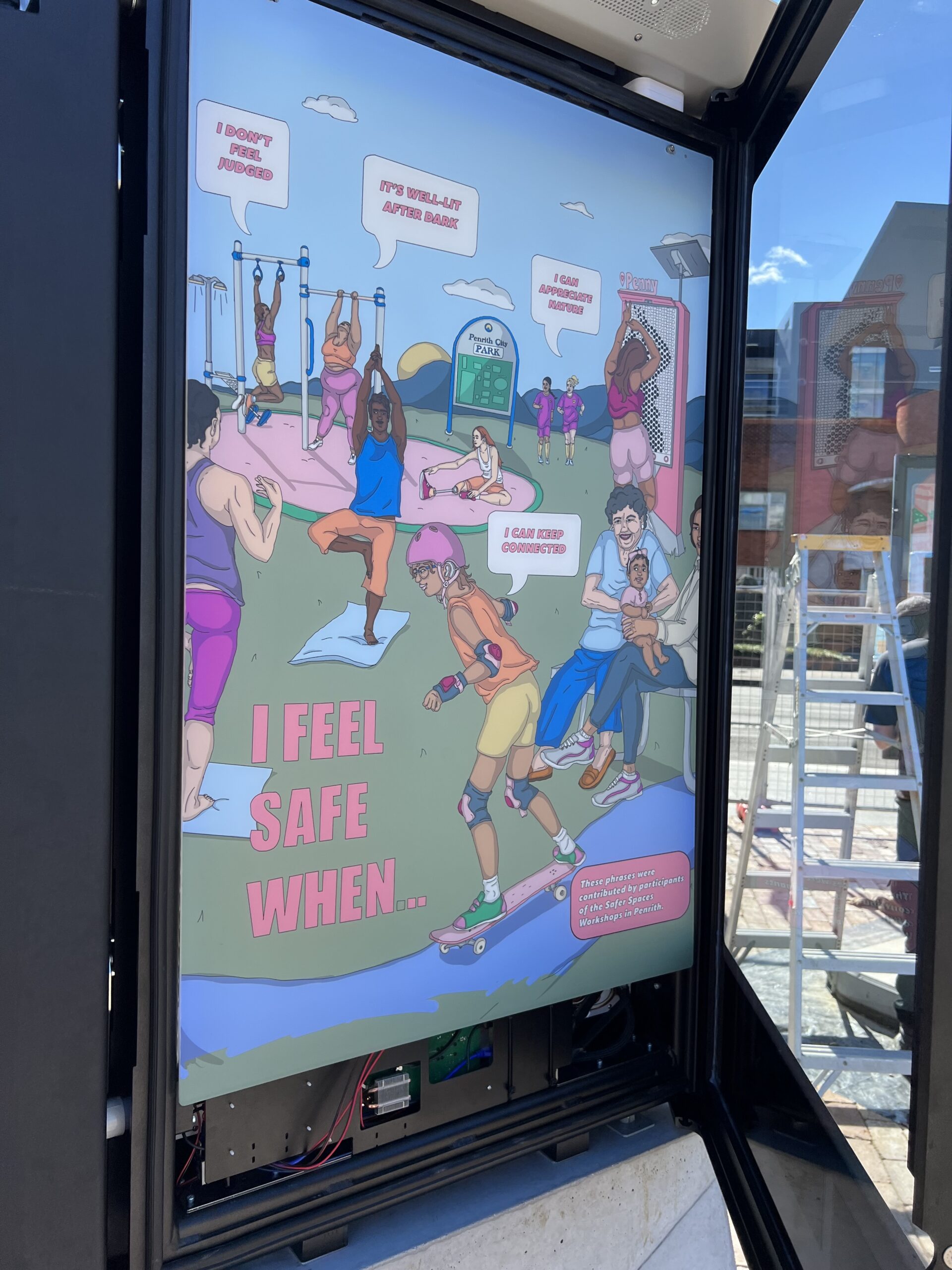
The Brief
This project is a standout, a collaboration between FASTLABS, Name.Narrate.Navigate, URBIS, SAPHI, and Design Anthology, supported by the NSW Gov Safer Spaces for Women and Girls Innovation Challenge.
The goal of this project has been to engage women and girls in reshaping perceptions and realities of safety in public spaces through interactive art installations (Penny’s) following alarming research indicating many women feel unsafe, particularly after dark, impacting their mobility, mental well-being, and sense of belonging. Urban planning and design are pivotal in addressing these safety concerns, as poorly designed spaces can heighten feelings of vulnerability.
These installations not only serve as artistic interventions but also gather valuable data and insights directly from the community to inform future urban planning and policy decisions.
Using a participatory approach, the project employs methods such as workshops, Photovoice, and Postcards to Practice and capture perceptions of safety. These methods empower women and girls to express their experiences, concerns, and aspirations regarding public safety, ensuring their voices shape the project’s direction.
The Penny’s interactive solar-powered lightboxes resembling standing stones showcase artwork and collect real-time data through sensors and augmented reality. This multimedia approach aims to transform public spaces into safer and more inclusive environments, fostering community engagement and empathy.
The project will be rolled out across various locations in Sydney, starting with Penrith, chosen based on community feedback and data analysis. Each installation will be tailored to local characteristics and needs, incorporating factors like foot traffic, lighting, and existing safety measures to maximize effectiveness.

Challenges & Opportunities
- Through rigorous R&D, we meticulously evaluated and selected new tech hardware based on stringent criteria, including energy efficiency, availability, price, durability, usability, high-temperature compliance, and ease of integration. This process ensures that only the best hardware options are shortlisted and integrated to meet our clients’ needs.
- We successfully managed logistics, language barriers, customs, and procurement complexities, especially with most of our technology being sourced from overseas. Despite the challenges of long lead times, we delivered a superior product on schedule by leveraging a blend of traditional and cutting-edge technologies
- This project has expanded our in-house manufacturing capacity, encompassing concrete toolmaking, concrete casting, electrical and battery design, final assembly, commissioning, project management, and installation
- Despite the complexities of coordinating a highly skilled team across multiple entities, including two levels of government, universities, and industry partners, we achieved exceptional outcomes through effective collaboration
- We effectively balanced power usage with generation from our off-grid system and seamlessly integrated new technologies, all while addressing environmental challenges posed by public spaces exposed to extreme temperatures and weather conditions

The Results
By leveraging art, technology, and community engagement, the project aims to create tangible improvements in how women and girls experience and perceive safety in Sydney’s public spaces. It represents a holistic approach to urban safety, addressing both physical design and social dynamics to foster more inclusive and secure environments for all.
- Rapidly deployable, off-grid solar- and battery-powered, modular, and configurable out-of-home media display that presents public information in a public space with remote access for creating and deploying content remotely
- Community Engagement: Women and girls will have their experiences validated and amplified, contributing directly to planning and place-making processes
- Public Awareness: The installations will expose the broader public to narratives of safety and encourage empathy, potentially driving behavioural change
- Data for Decision-Making: Rich datasets generated by the project will inform city planners and policymakers, guiding future interventions and improvements in public spaces
- Economic and Social Benefits: Local businesses and technology suppliers will benefit from increased activity and innovation associated with the project
.
